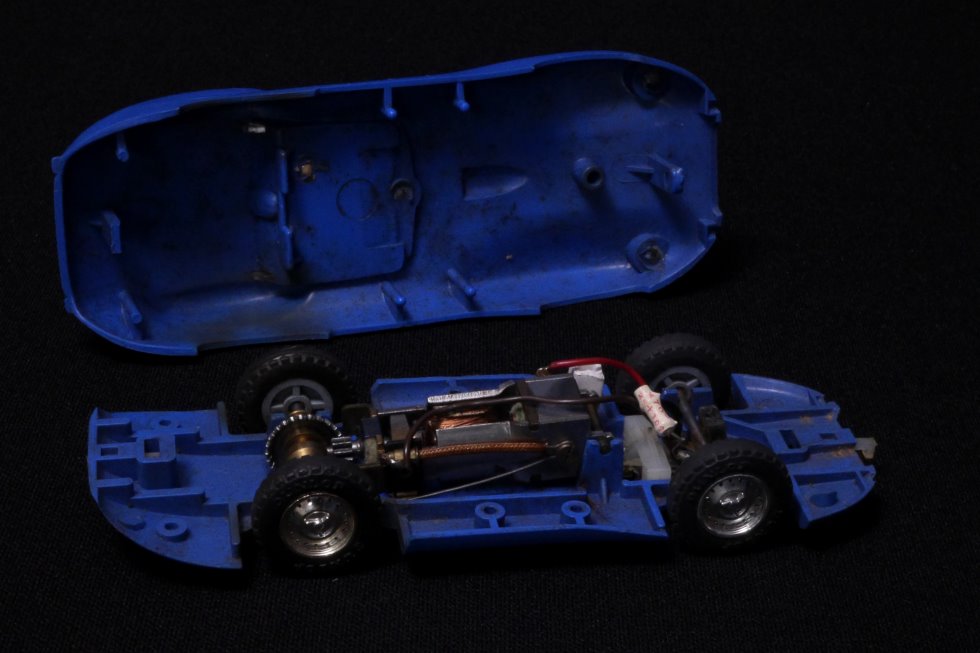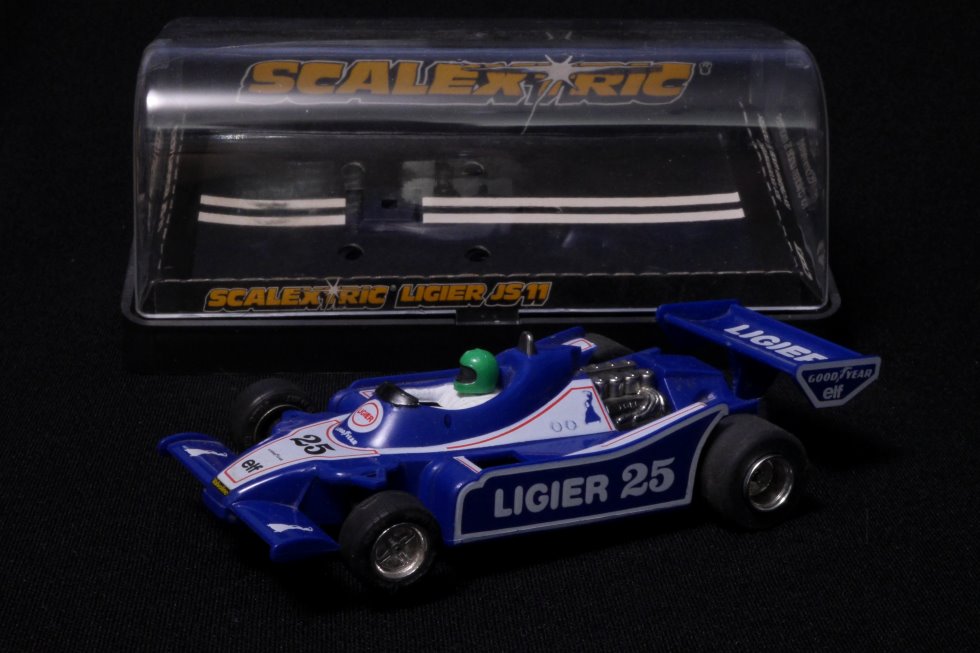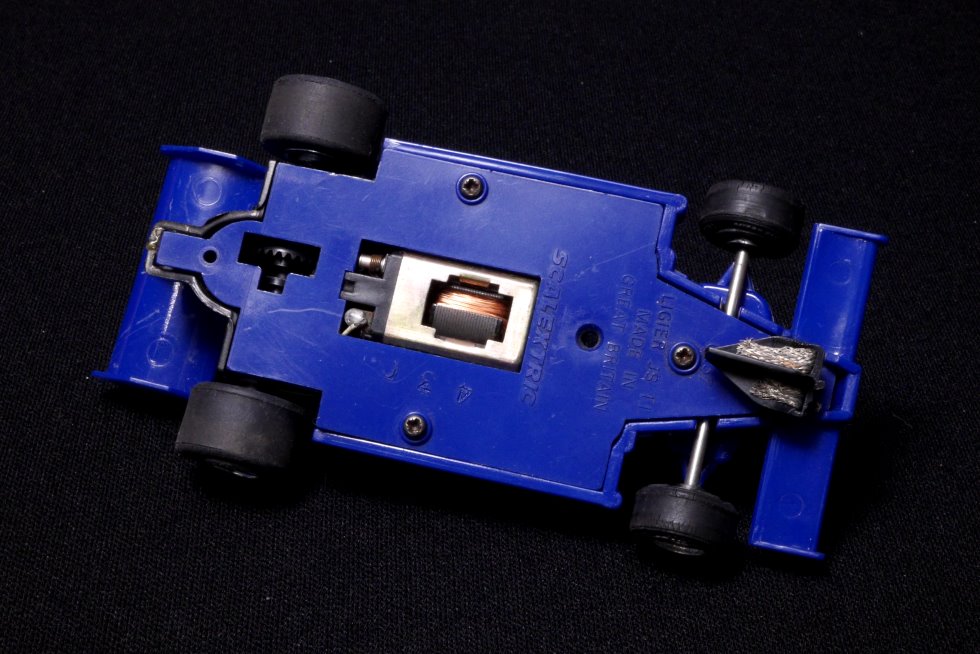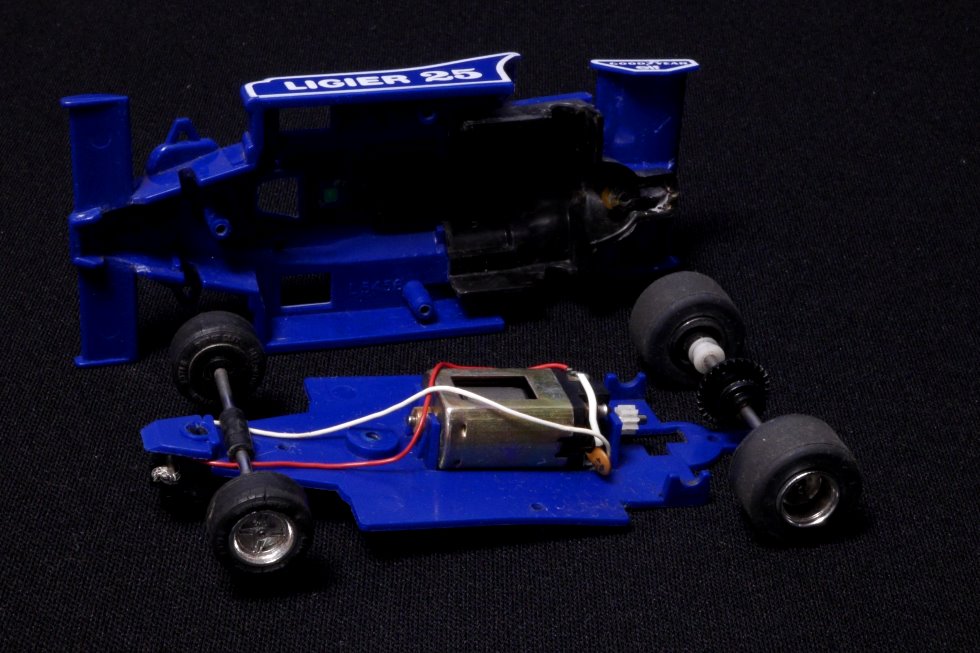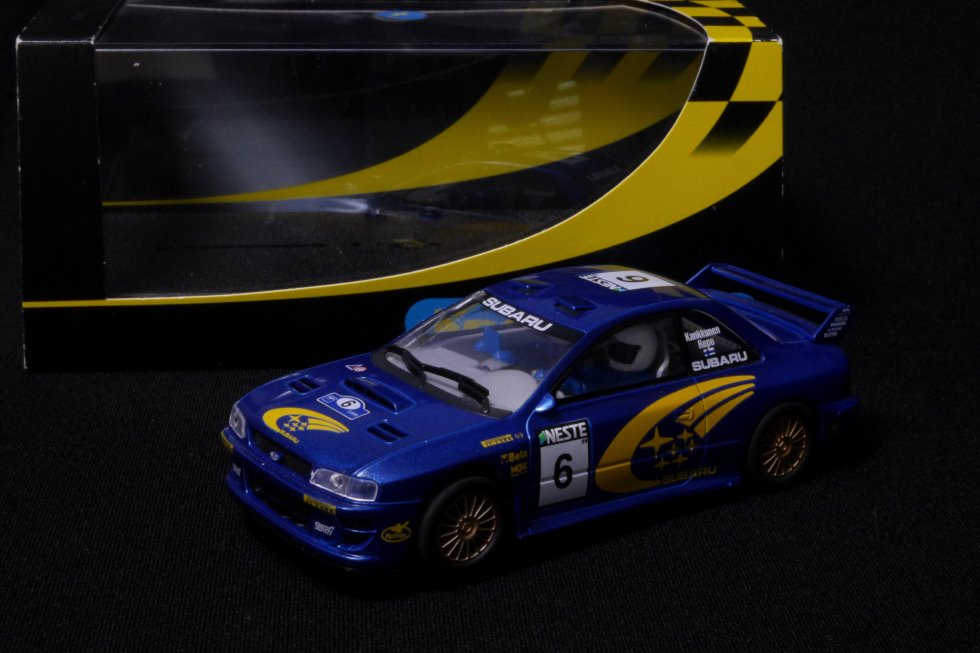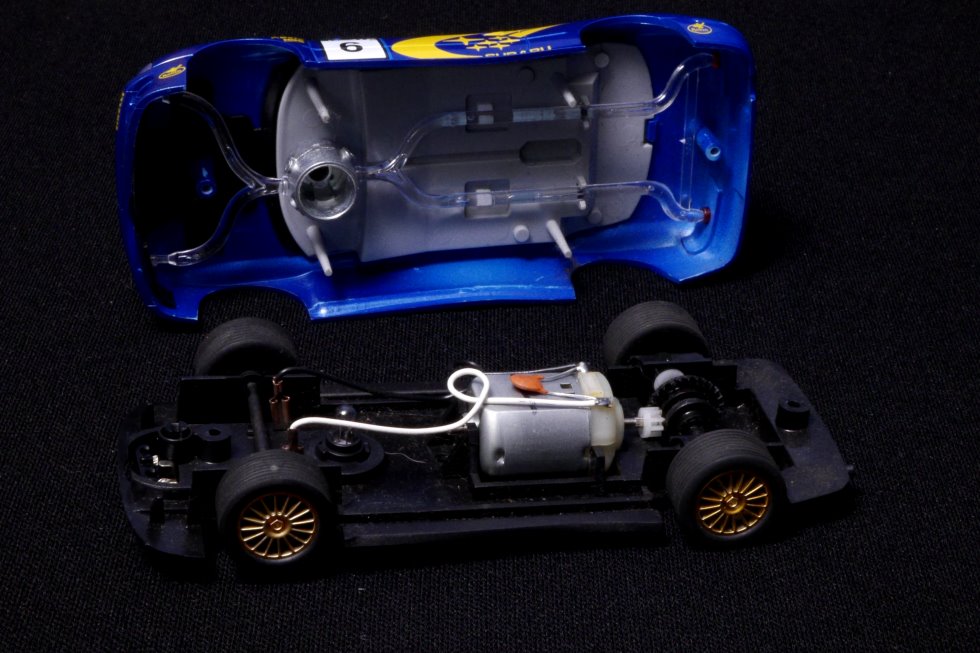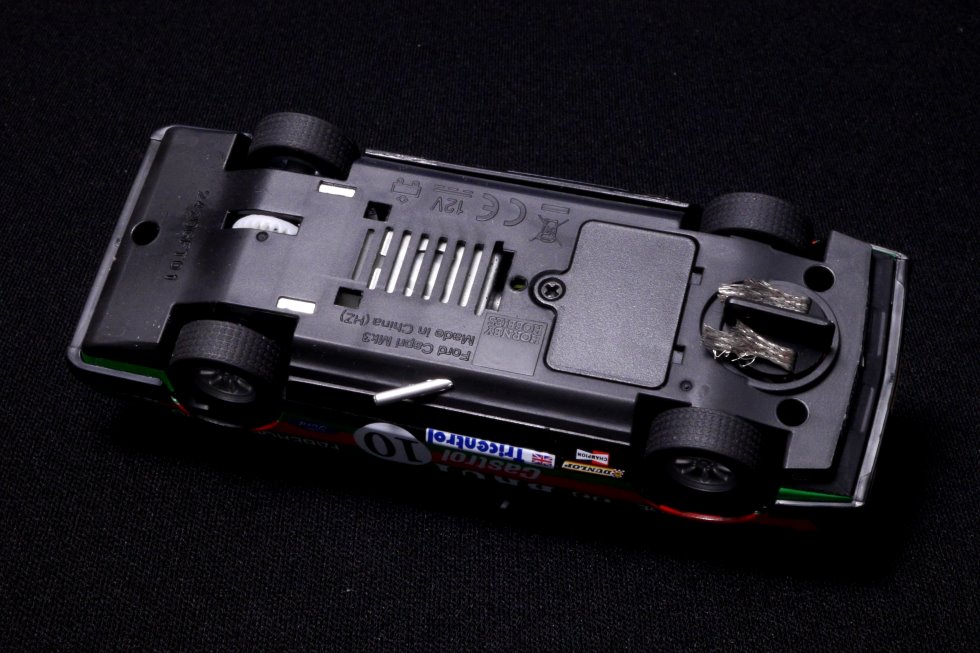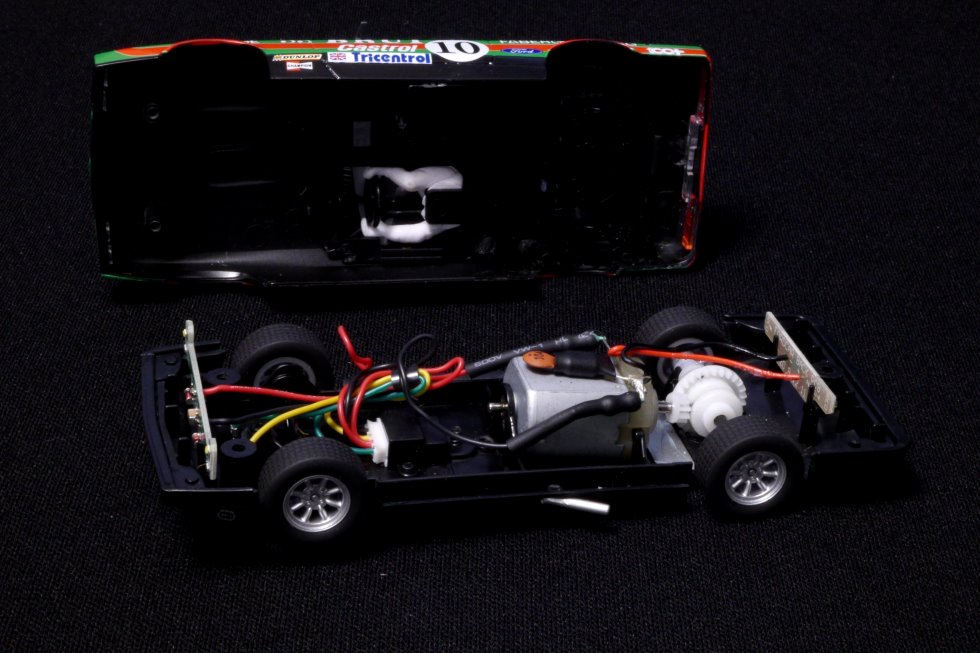Are you sitting comfortably? Then I’ll begin…
For the past sixty-four years, the histories of Scalextric and real-life motor racing have been intertwined. Whether it was the products Scalextric manufactured or the top drivers who raced them in their leisure time, the sport and the toys developed side by side. Scalextric has been successful because it allows us to create 1:32 scale motor races in our own living rooms.
In this post, I’m going to tell a version of the Scalextric story based around just four cars. These cars are also part of my own life story. This isn’t the definitive Scalextric history by any means – I would recommend Adrian Norman’s remarkable ten-volume ‘Scalextric: The Ultimate Guide’ project for that. However, I hope you’ll enjoy this short journey through the decades and – who knows – it might stir your own Scalextric memories.
1960 – C56 Lister Jaguar
My dad and older siblings jumped on the Scalextric bandwagon in 1959. When I came along a decade later, a couple of Lister Jags were still big favourites for Bank Holiday family entertainment on the living room floor.
The Lister Jaguar was one of the first plastic cars to be produced by Scalextric, powered with the open RX motor and featuring a plastic pin guide with tufts of braid either side. The new plastic cars replaced the original tin-plate Ferrari and Maserati that were simply motorised versions of the ‘Scalex’ cars produced in Havant. Scalex + electricity = Scalextric.
Scalextric was unveiled by Minimodels at the January 1957 Harrogate Toy Fair – and shortly after, the company was bought by Tri-ang. The days of tinplate toys were over and the new owners invested heavily in bringing this exciting new product into the plastic age. With proper marketing, Scalextric began to capture the imaginations of thousands of post-war motor racing enthusiasts like my dad.
As the 1960s progressed, Scalextric flourished – the range of familiar accessories, including the Goodwood-inspired buildings, became the backdrop to a regularly updated catalogue of cars. Power went from batteries to chunky mains transformers; throttles changed from on-off buttons to variable speed thumb-controllers – and, in 1968, to the now-familiar ‘pistol-grip’ handles. Early on, the track changed from the original rubber to the plastic system that today’s Scalextric racers know as ‘classic’ track.
1981 – C137 Ligier JS11
Although I was introduced to a controller before I could walk or talk, it wasn’t until the late 70s that I seriously got into Scalextric. In terms of equipment, nothing much had changed, so I just carried on with the track handed down to me by my brother and sister. The cars had changed – and the Ligier JS11 is a fine example of Scalextric machinery going into the 80s. It was also the Grand Prix car I rooted for in 1979 and 1980.
The Scalextric Ligier is powered by the legendary Johnson motor and has a traditional blade guide with the motor cables attached via brass eyelets. There’s the standard big and small wheels that were fitted to all Scalextric cars at the time. Plus there’s the universal ‘peg-head’ helmet that is so evocative of the era. In many ways, it’s much closer to a modern Scalextric car than to the 1960 Lister Jaguar.
Now owned by the Dunbee-Combex-Marx Group, Scalextric cars (and Hornby trains) were being produced at the Rovex factory in Margate. In 1982, this would become Hornby Hobbies Ltd – an independent company. Both Tri-ang and D-C-M had suffered financial problems as the post-war economic boom cooled, but Hornby Hobbies went hell-for-leather with a series of electronic accessories that were well ahead of their time. You can read a blog post about the fabulous 1981 catalogue here: blog.jadlamracingmodels.com/2020/09/28/scalextric-history-1981-comic-book/
2000 – C2255 Subaru Impeza
I’ll never forget the fun I had with Scalextric as a child and as a teenager… but then the toys got left behind as I began exploring an exciting new adult life. My parents remembered the importance of Scalextric to me – and a box with a few of my cars (including the Ligier) arrived when they cleared out the family home. After a 15-year gap, I bought a Scalextric rally set on a whim. I realised a lot had changed since the 1980s – but didn’t realise even bigger changes were about to happen.
This Subaru was one of the first cars I added to the set. The detail of the body was a big step up from the Ligier. Mechanically, the car is powered by the Mabuchi S-can motor that is still used – as are the gears and axle bushings. There’s an early form of magnatraction – introduced in the 1990s, plus a guide without wires and working lights illuminated by a central bulb.
This model was one of the last Scalextric cars manufactured in the UK. Production had started moving to China during 1998 and the Margate assembly line stopped for good in 2000. Chinese factories offered modern techniques and lower costs that could deliver the super-high-detail cars that companies like Fly had recently introduced into the slot car market. It was those high-detail models that re-infected me with the slot car bug.
My rally set still had the same ‘classic’ track of the 60s, 70s and 80s. There was a new integrated powerbase straight and some new borders and barriers, but otherwise it was identical. The hand throttles had been updated – and these would carry over to the new Chinese-made Sport track that arrived on the scene in 2001.
2020 – C4101 Ford Capri Mk3
Twenty years on and the fundamentals have remained the same, although with a few significant innovations. The Sport track system has been a great success, joined by Scalextric Sport Digital in 2004. I wasn’t an early adopter of digital, but with the 2010 C7042 Advance Powerbase and the arrival of ‘simulation racing’, I got hooked. The 2017 ARC Pro system updates digital and makes it much easier to use – I love it.
The Mk3 Capri was new for 2020 and is a typical modern Scalextric car. It is Digital Plug Ready – Scalextric now produce all their cars non-digital, but makes them easy to convert with a C8515 digital plug. From 2016, the flat underpan, an in-line Mabuchi S-can motor and a lightweight tray interior are more-or-less standard – vastly improving the handling and performance of Scalextric cars. I enjoy driving the Capri as much as I enjoy admiring its looks.
Scalextric – along with Hornby, Airfix, Corgi and Humbrol – had new owners and management in 2017. The current owners – Phoenix Asset Management – have a genuine respect for the brands and their place in British culture. Their aim is to rebuild the company for a strong and successful future. The young, knowledgeable and enthusiastic Scalextric team has certainly given us some wonderful new models in recent years. They are creating themes that appeal across the wide Scalextric fan-base – as well as reaching out to new people who feel nostalgic about the cars, films and TV programmes of their youth.
During the Coronavirus pandemic, there was renewed interest in Scalextric. It was a difficult time – and home-based hobbies became really important. Scalextric does hark back to our childhood memories, but it is also very relevant to the present and – hopefully – to the future. Products like Spark Plug, the super resistant hypercar models, police chase, drifting and pursuit sets – plus the 1:64 scale My First Scalextric and Micro Scalextric sets – are all best sellers with families, providing hours of fun for the children who have become yet another generation of slot car racers.
For the first time in a while, I’m confident that Scalextric will still be selling sets, cars and innovative gadgets in another twenty years time. If I’m still around, I wonder what I’ll see in the 2040 catalogue… What will real racing cars of the future be like? Will the current crop of F1 and GT cars be seen as classics? And will the new Le Mans Hypercars spark a renaissance of endurance sports car racing? To be honest, I think I can wait to find out… I’m not so young anymore and I don’t want to wish the years away. I’m perfectly happy to focus my excitement on the cars I’ll be getting from this year’s Scalextric catalogue – and maybe have a few guesses about next year.




